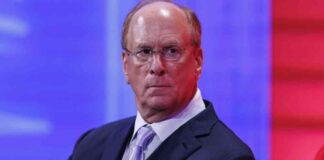Empowering Women’s Sports: The Rise of Fan and Brand Engagement
In a pivotal moment for women’s sports, Indiana Fever guard Caitlin Clark recently faced off against Atlanta Dream guard Destanni Henderson in a WNBA preseason game at Gainbridge Fieldhouse in Indianapolis. This matchup not only showcased the incredible talent and skill of these athletes but also highlighted the growing enthusiasm and support for women’s sports.
Jessica Berman, commissioner of the National Women’s Soccer League, emphasized the enduring appeal of women’s sports, stating that the fervor and passion surrounding these events will only continue to grow. Berman noted that women’s sports have seen a significant increase in media coverage, with the share rising from around 5% to closer to 15%. This trend reflects a pattern of success across various leagues and athletes, demonstrating the sustained interest and engagement in women’s sports.
One key factor driving the success of women’s sports is the collaborative effort among leagues to share best practices and support each other’s growth. Berman highlighted the importance of expanding the share of the pie for women’s sports, emphasizing the need for unity and collective advancement rather than competition for limited resources.
Sara Gotfredson, founder of Trailblazing Sports Group, underscored the strong business case for brands to invest in burgeoning women’s sports leagues like the NWSL and the WNBA. She pointed out that fans of women’s sports are engaging with brands in a unique and meaningful way, creating opportunities for partnerships that resonate with this dedicated audience. Brands such as Google, Ally Bank, and AT&T have recognized the value of aligning with women’s sports and are leading the way in building equity and visibility for these leagues.
The endorsement deals secured by athletes like Cameron Brink, a forward on the Los Angeles Sparks, highlight the growing interest from brands in partnering with female athletes. Brink’s collaborations with companies like New Balance, Urban Decay, and Legal Zoom showcase the diverse opportunities available for women in sports beyond their on-court performance. Brink emphasized the importance of leveraging her success in the WNBA to build a strong off-court presence, demonstrating the potential for athletes to expand their brand and influence in the industry.
Accessibility and visibility are key factors in driving fan engagement with women’s sports. Both Brink and USC’s women’s basketball star JuJu Watkins emphasized the need for easier access to games and increased coverage across various platforms. Brink highlighted the challenges fans face in accessing women’s sports content and the importance of streamlining the viewing experience to attract a broader audience. Watkins echoed this sentiment, calling for more exposure on linear television, podcasts, YouTube shows, and other media channels to reach a wider demographic of sports enthusiasts.
Despite the progress made in recent years, women’s leagues still have room to grow and evolve. Berman acknowledged the relative youth of leagues like the NWSL, which only became independent from the United States Soccer Federation in the past decade. She emphasized the need for continued development and innovation in women’s sports to catch up to the legacy and experience of men’s leagues, recognizing the unique challenges and opportunities facing women in the industry.
In conclusion, the rising fan and brand engagement in women’s sports signals a transformative shift in the sports industry, with increased visibility, support, and investment paving the way for greater opportunities and recognition for female athletes. As fans, brands, and leagues continue to collaborate and advocate for the growth of women’s sports, the future looks bright for empowering women in athletics and advancing the inclusivity and diversity of the sports world.






















